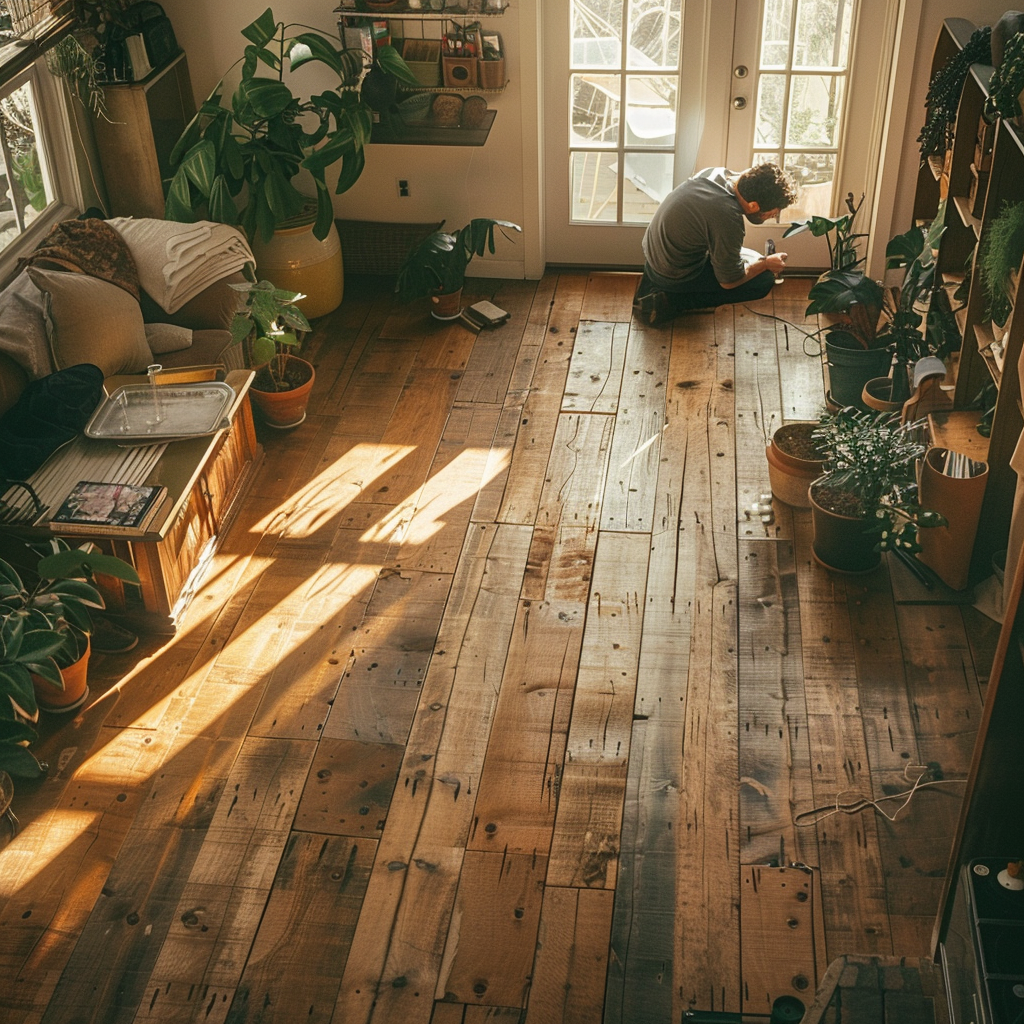Why Choose Eco-Friendly Renovations?
Opting for eco-friendly renovations is not just about reducing your carbon footprint. It can also lead to long-term savings, especially on energy and water bills. Plus, sustainable materials and techniques often increase the value of your home.
Affordable Eco-Friendly Renovation Ideas
1. Energy-Efficient Lighting
- What it is: Swap out incandescent bulbs for energy-efficient LED lighting.
- Why it’s eco-friendly: LED bulbs use 75% less energy and last 25 times longer than incandescent lighting, reducing both energy consumption and waste.
- Cost-effective tip: Start with high-use areas like the kitchen, living room, or home office to see an immediate difference in your energy bill.
2. Low-Flow Fixtures
- What it is: Install low-flow showerheads, faucets, and toilets to conserve water.
- Why it’s eco-friendly: These fixtures can reduce water usage by up to 60%, making a significant impact on both your utility bill and the environment.
- Cost-effective tip: Many water utilities offer rebates for installing low-flow fixtures, making this upgrade even more affordable.
3. Sustainable Flooring
- What it is: Choose eco-friendly flooring options like bamboo, cork, or reclaimed wood.
- Why it’s eco-friendly: Bamboo grows rapidly, making it highly renewable, while cork is biodegradable and harvested without harming trees.
- Cost-effective tip: Look for sales on sustainable flooring or check out secondhand building supply stores for discounted materials.
4. DIY Insulation
- What it is: Add insulation to your attic, walls, and floors to keep your home’s temperature stable.
- Why it’s eco-friendly: Proper insulation reduces the need for heating and cooling, which can lower your energy consumption by up to 20%.
- Cost-effective tip: Use eco-friendly insulation materials such as recycled denim or cellulose, which are affordable and effective.
5. Repurpose and Reuse Materials
- What it is: Use reclaimed wood, salvaged tiles, or repurposed bricks for your renovation projects.
- Why it’s eco-friendly: Reusing materials reduces waste and the demand for new resources.
- Cost-effective tip: Check out architectural salvage stores or online marketplaces for affordable, high-quality reclaimed materials.
6. Install a Programmable Thermostat
- What it is: Replace your old thermostat with a programmable or smart model to optimize energy use.
- Why it’s eco-friendly: These devices allow you to schedule your heating and cooling systems more efficiently, reducing energy waste.
- Cost-effective tip: Many smart thermostats qualify for rebates from energy companies, further reducing upfront costs.
7. Green Paint Choices
- What it is: Choose low-VOC or zero-VOC paints for your next painting project.
- Why it’s eco-friendly: Traditional paints release harmful volatile organic compounds (VOCs) into the air, contributing to poor indoor air quality. Low-VOC paints are healthier for both your family and the environment.
- Cost-effective tip: Shop during seasonal sales or look for eco-friendly paint brands that offer affordable options.
How to Plan Your Eco-Friendly Renovation on a Budget
- Start Small: You don’t need to renovate your entire home at once. Start with smaller, high-impact projects like replacing lighting or updating your thermostat.
- Set Priorities: Focus on areas that will give you the most savings or environmental impact, like energy efficiency or water conservation.
- Do It Yourself: Tackle DIY-friendly projects like installing insulation or repainting with eco-friendly paint to save on labor costs.
- Seek Out Rebates: Many energy companies and local governments offer rebates for energy-efficient home upgrades. Research what's available in your area to save even more.
Conclusion: A Greener Home, One Project at a Time
Eco-friendly home renovations are achievable, even on a budget. By making small, affordable changes, you can create a more sustainable, energy-efficient home that saves you money in the long run.












